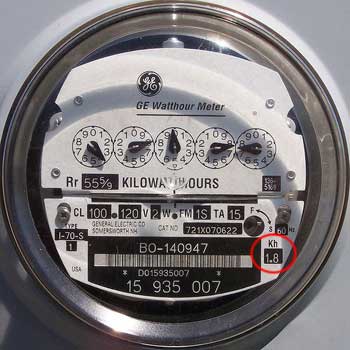
Power Consumption of Mobile Devices
Ping!
The latest Apple/Mac/iOS Pings can be found by searching Keyword "ApplePingList" on FreeRepublic's Search.
If you want on or off the Mac Ping List, Freepmail me
Posted on 04/06/2016 9:05:30 PM PDT by Swordmaker
Who cares. Just build a bunch of Generation 3 nuclear reactors and be done with this nonsense.

The latest Apple/Mac/iOS Pings can be found by searching Keyword "ApplePingList" on FreeRepublic's Search.
If you want on or off the Mac Ping List, Freepmail me
If you leave your charger plugged in all the time, you’ll have some phantom power usage that probably nearly equals the power used to recharge the battery in your device.
# x number of iPhones = megawatts!
The next iPhone will have a tiny windmill to power it.
It will come with a proprietary connector.......
Here is a prototype!
http://www.geek.com/mobile/charge-your-iphone-with-wind-power-1299064/
It’s pennies compared to oven, dryer, dishwasher and heating and air.
How much power do the wall plug Warts consume when not connected to a device?
Regards,
My phone plan for my iPhone is $25 -every three months.
using coal or nukes?
If you have to ask how much it costs, you can’t afford it.
You can now get inexpensive power metering devices that have a lot of built in features that make them much more convenient and accurate than a typical clamp on multimeter. They are literally only about $20 on Amazon. We have a couple of them.
We use them because we live in an area where the power goes out frequently during the winter. It is very helpful for us to know the power consumption and starting load for appliances when we are using one of our generators when the power is out.
Normally, however the power consumption of these little wall chargers is so negligible that even when using a generator we do not bother to worry about how many we have plugged in. So it does not surprise me at all that an iPhone doesn’t use more than a couple bucks of electricity in a year.
the new ones that weigh almost nothing consume almost no power when not connected to a device. The old type (heavy, with a transformer inside) consumed a small amount, but multiplied by as many as were plugged in, it adds up. Thus, we now have the new kind, using switchmode electronics, that craps up the RF spectrum, but hey, nobody listens to AM radio anyway.
Just plug it into your Tesla - free power!
What service provider is that?
At&T
My explanation will probably cause more confusion than clarification. The short answer is they will barely register on your residential watt meter. To confirm this you could turn everything in your house off and then go plug in every wall wart you ever had. The watt meter would barely register any usage. However, If you had commercial metering that measured your “power factor” on a demand metering system there could end up being a disproportionate monetary penalty if you were not using some type of capacitance type correction. "Power factor" is basically the ratio between the amperage you can measure with an ammeter and the wattage you would measure with a watt meter.
With typical residential metering the amount extra that you will pay having dozens of wall warts plugged in will be very little even over a year. This is because when a “wall wart” has no load they use very few watts as measured by the watt meter but under no load many actually are using more than twice the amperage than what one would expect from the watt meter. With hundreds of thousands or even millions typically in use in a municipality they retard the wave form of the AC power and increase the amount of current in the utility's power lines while registering almost no usage in typical residential watt meters. The utility company can use large capacitors in their system to correct for this, but they do cause some unreimbursed headaches for power companies.
It is a little complicated to measure power factor with a typical multimeter and a watt meter but there are inexpensive power monitoring devices available for around $20 that can tell you the amperage and the wattage and calculate the power factor in small appliances and electronic devices.
Actually, you are correct the new devices use less power when not in use and also have better power factor ratings. The same is true of fluorescent light ballasts.
My device chargers get warm when they’re working, and go cold when they ate disconnected from the phone/tablet, even when they’re still plugged into the outlet. If they draw juice when they’re not connected to a hungry device, I don’t know. [I don’t reckon they do, but...]
Get a small deep cycle battery, hook up a compact solar panel to it, run the 12v cord from battery into house with a multi accessory socket, use the sun.
Or use a portable power unit you charge off the car, take it in the house and use it to charge your stuff.
Just stay off the grid as much as possible.
Disclaimer: Opinions posted on Free Republic are those of the individual posters and do not necessarily represent the opinion of Free Republic or its management. All materials posted herein are protected by copyright law and the exemption for fair use of copyrighted works.